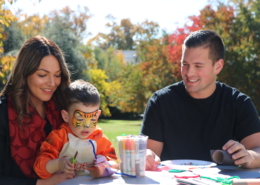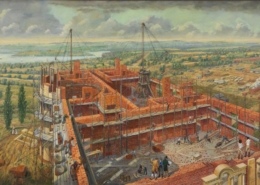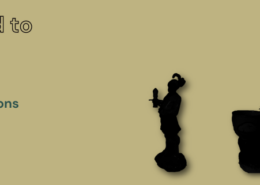Old Roses
 |
| Old Blush Rose |
The Peter family has had a long history of admiring and cultivating a very special type of plant…the rose. In the early years of Tudor Place, roses were found in almost every area of the garden: down near the southern perimeter which borders what is now Q St, along the lower walk, and scattered throughout the north garden. Today, visitors to the Tudor Place gardens can still see some of the descendents of the first roses cultivated on the property.
Roses were first mentioned in the family writings referring to Martha Custis Peter, who with her husband Thomas purchased Tudor Place in 1805. Their daughter, who inherited Tudor Place, Britannia Kennon remembered a small double flowering white cluster rose, a damask rose, and the hundred leaf roses were in the garden before she was born in 1815. She later wrote, “Every year mother would have the old hundred leaf roses gathered and sent to Mrs. Arney who owned a sweet store on Bridge Street. Mrs. Arney would distill rosewater from rose leaves. It took one bushel of roses to make a bottle of rose water – about a quart. She would keep one bottle and send mother the other.” At one time hundred leaf roses could be found in a large clump in the area which is now known as the Orchard garden. The roses were divided and replanted along the center axis path by Armistead Peter 3rd and were present well into the 20th century. Rosa × centifolia are highly fragrant and still used in perfume making.
Another family favorite was the old monthly rose, pink daily, or “Old Blush” rose. This rose is a hybrid of the first China rose and was brought into cultivation in the 1750’s. The old monthly rose was at Tudor Place from the beginning. Martha Custis Peter had this rose saved and transplanted in the garden while the house was being built. It was returned to its proper place and replanted by the parlor window after the house was complete in 1816. The monthly rose is still grown on the south side of the house by the parlor window. We believe the specimens on the south façade are cuttings from the original rose bush.
Tudor Place has many antique varieties and newer cultivars in the garden. Some are in their original locations while others have been moved due to changing growing conditions. The roses have been admired by family and visitors for over a century. In an 1879 article for the Georgetown College Journal, Mrs. Anna W. Dorsey writes ”In summer the grounds, in which Mrs. Peter took great delight and pride, present a scene of unrivalled beauty with their great shade trees, and sloping velvety lawns, flowers of every shape and hue, vines, shrubbery with rare varieties and, above all, thousands of roses as famous for their beauty and fragrance as the ‘thrice blooming rose of Paestrum'”. Tudor Place continues this tradition.






